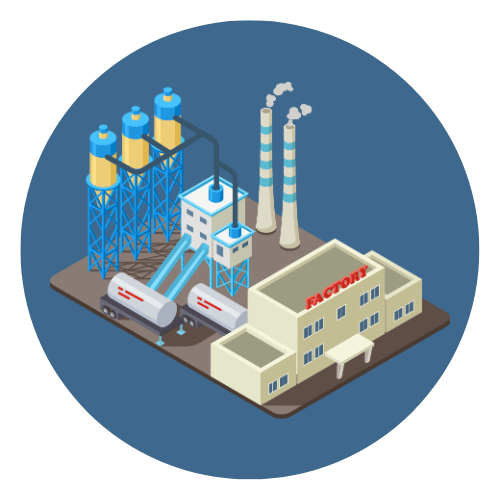VI. Maintenance and Replacement

Proper maintenance of maximum stop springs is essential to ensure they function reliably and safely over their operational lifespan. Understanding the signs of wear and tear, knowing when to replace them, and following best practices for maintenance can help prevent system failures and extend the life of both the springs and the equipment they protect.
Signs of Wear and Tear in Maximum Stop Springs:
- Visible Deformation: Springs that show signs of bending, warping, or permanent deformation indicate that they have been subjected to excessive force or wear over time. Deformed springs lose their ability to function correctly and should be replaced immediately.
- Corrosion or Rust: If the spring is exposed to moisture, chemicals, or harsh environmental conditions, it may corrode or rust. Corrosion weakens the material, compromising the spring’s structural integrity. Rust on the surface or between coils is a clear sign that the spring should be replaced.
- Reduced Load Capacity: Over time, a spring may lose its ability to handle the load it was designed for. If you notice that the spring is compressing or extending more easily than before, it may no longer be able to support the necessary force, signaling wear or fatigue.
- Fatigue Cracks: Repeated cycling of the spring under load can lead to fatigue cracks, which can eventually cause the spring to break. Inspect the spring for small cracks, particularly near the coil ends or along high-stress areas.
- Noise or Squeaking: If the spring starts making unusual noises, such as squeaking or grinding, this may indicate internal friction or misalignment due to wear. These sounds are often early indicators that maintenance is required.
When to Replace or Maintain a Maximum Stop Spring:
- Routine Inspections: Regular inspections of the spring’s condition should be part of a preventive maintenance schedule, especially in high-stress or safety-critical systems. Inspect for signs of wear, corrosion, or reduced load capacity at regular intervals based on the system’s operational cycles.
- Replace After Set Cycles: Springs designed for high-cycle applications will eventually fatigue and should be replaced after a certain number of operational cycles. Manufacturers often provide guidelines on the expected lifespan of a spring in terms of cycles. If a spring reaches this threshold, it’s time to replace it, even if it appears to be in good condition.
- Performance Degradation: If the spring’s performance is noticeably degrading—such as failing to provide consistent stopping points or struggling to return to its original position after deflection—this is a sign that replacement is necessary.
- After Major Events: Replace the spring after any significant event, such as a mechanical failure, system overload, or heavy impact. These events may have caused hidden damage to the spring, even if it looks intact.
Best Practices for Maintenance to Ensure Longevity:
- Lubrication: Regularly lubricate the spring to reduce friction between coils and prevent rusting. Use a high-quality lubricant designed for springs, especially in high-wear or high-vibration environments. However, ensure that the lubricant does not interact negatively with the spring material or the surrounding system.
- Surface Protection: If the spring is in an environment prone to moisture or chemical exposure, consider applying protective coatings such as zinc plating or powder coating to protect against corrosion.
- Proper Installation: Ensure the spring is installed correctly and within the system’s design specifications. Misalignment, improper tension, or using the wrong type of spring can cause premature failure.
- Regular Cleaning: Clean the spring and surrounding components to prevent debris buildup, which can cause wear, friction, or corrosion. In dusty or abrasive environments, frequent cleaning is especially important.
- Avoid Overloading: Always operate the spring within its rated load capacity. Exceeding the designed load will shorten the spring’s lifespan and increase the risk of sudden failure.
- Monitor Operating Conditions: Keep track of environmental conditions such as temperature, humidity, and exposure to chemicals. If the spring is operating outside its recommended conditions, consider upgrading to a more suitable material or applying additional protective measures.
VII. Conclusion
Maximum stop springs play a critical role in controlling motion and protecting mechanical systems from damage due to over-travel or excessive force. By limiting movement to a designated range, these springs enhance the safety, precision, and longevity of equipment in a wide range of industries.
Proper maintenance is key to ensuring the continued performance of maximum stop springs. Regular inspections, preventive maintenance, and timely replacement of worn or damaged springs will not only extend the life of the springs themselves but also protect the systems in which they are installed. Following best practices—such as proper lubrication, load management, and environmental protection—will help ensure that maximum stop springs perform reliably for the duration of their operational life.
In conclusion, maximum stop springs are vital components in industrial machinery, automotive systems, and many other applications. Their precise control of movement and shock absorption capabilities make them indispensable for maintaining operational safety and efficiency.


 Automation System
Automation System  Energy Engineeing
Energy Engineeing  Instrumentation System
Instrumentation System  Mechanical Engineeing
Mechanical Engineeing  Piping Technologies
Piping Technologies  Transportations
Transportations  Manufacturing
Manufacturing  Training Material
Training Material 














